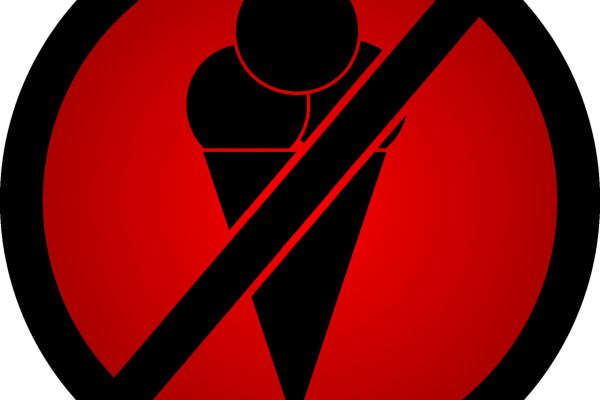Signs and Symptoms of Eating Disorders
Eating disorders can involve unmistakable changes, such as severe weight loss, as well as hidden signs, such as binge-eating alone. Identifying an eating disorder as soon as possible is important because earlier treatment raises the prospect of a successful recovery.
On This Page
- What are the symptoms of an eating disorder?
- How can you recognize if someone has an eating disorder?
- When do eating disorders develop?
- Who can develop an eating disorder?
- Are women more likely to develop eating disorders than men?
- How is an eating disorder diagnosed?
- At what point does a diet become an eating disorder?
Eating disorders encompass harmful and often dangerous patterns of eating. This behavior is often driven by—and expressed as—dissatisfaction about one’s body and weight. Common signs can include rapid weight loss, strict diets, rigid routines around eating, excessive exercise, deep concern about body image, and social withdrawal.
Each eating disorder has a specific set of symptoms:
- Anorexia Nervosa: Restricting the amount of food eaten, leading to significantly low body weight, and intense fear of gaining weight.
- Bulimia Nervosa: Eating an abnormally large amount of food in a given time frame, a lack of control over eating, and subsequent behaviors to prevent gaining weight such as vomiting, laxatives, and excessive exercise. This process occurs at least once a week for three months
- Binge-Eating Disorder: Eating an abnormally large amount of food in a given time frame and a lack of control over eating. These episodes involve eating unusually quickly, feeling uncomfortably full, eating without being hungry, eating alone due to embarrassment, and feelings of disgust afterward. Binges occur at least once a week for three months.
- Pica: Consistently eating nonfood items, such as paper, cloth, or hair, for at least one month.
- Rumination Disorder: Consistently regurgitating food to chew, swallow, or spit out for at least one month.
- Avoidant/Restrictive Food Intake Disorder: Not eating to the point of insufficient nutrition or energy, in the absence of anorexia or bulimia.
The clearest signs of eating disorders may be rapid weight loss, unusual eating patterns, and excessive exercise. But there are also more subtle signs that a disorder may be developing or underway.
A person might count or measure their food very specifically and rigidly, such as always having three carrots. They might develop inflexible routines around when or how they eat. They might only use particular dishes or cutlery. They might express intense interest in what others are eating or recently ate. They might inspect foods and nutrition labels very carefully at the supermarket.
One observable theme, as the signs above demonstrate, is the development of routines and rigidity around eating and exercise.
Eating disorders often emerge in adolescence and early adulthood. The median age when anorexia and bulimia develop is 18-years-old and the median age when binge-eating disorder develops is 21-years-old, according to the National Institute of Mental Health.
It’s not uncommon, however, for an eating disorder to strike women in midlife. Stressful life changes, such as a divorce or childcare responsibilities, as well as hormonal changes might lay the groundwork for disordered eating to develop.
There are no boundaries to who can be hurt by eating disorders. Women develop them more often than men, but eating disorders can still arise in people of any age, race, or gender.
Recent research found eating disorders affect women of ethnic minorities just as much as they affect White women. The risk factors for developing a disorder were also the same across all ethnic groups.
Eating disorders are more common in women than in men. The prevalence of anorexia over one’s lifetime is three times higher for women than men among adults in the U.S., according to the National Institute of Mental Health. The lifetime prevalence is five times higher for bulimia two times higher for binge-eating disorder. In adolescence, eating disorders are twice as prevalent in girls than in boys. However, men still struggle with body image, weight, and eating disorders as well.
Eating disorders may be diagnosed by a mental health professional, a primary care physician, or both. The diagnosis can encompass both a physical exam and psychological questionnaires to assess a person’s eating habits and relationship to food and weight.
To determine if the person has a disorder, the doctor will follow the criteria listed in the DSM-5, which has checklists to diagnose each of the six feeding and eating disorders: anorexia nervosa, bulimia nervosa, binge-eating disorder, pica, rumination disorder, and avoidant/restrictive food intake disorder.
In today’s wellness-obsessed culture, it can be difficult to distinguish between occasional concerns around food, picky eating, a diet, and an eating disorder. Where can you draw the line between health and harm?
Signs that picky eating or a diet may be shifting into a fuller disorder may include planning meals days in advance, consulting nutritional information and weighing ingredients, feeling guilty or anxious when eating “forbidden” foods, becoming dependent on diet for self-esteem, and using moral convictions to justify rules around rigid eating to others. Overall, a disorder encompasses the inability to eat according to one’s appetite—eating patterns are instead dictated by rules and specifications.
In a clinical context, a mental health professional can determine whether someone has a disorder or not by assessing the diagnostic criteria in the DSM. But even if someone’s struggles with eating or body image don’t meet the clinical threshold, that doesn’t mean they aren’t worth understanding and addressing.














